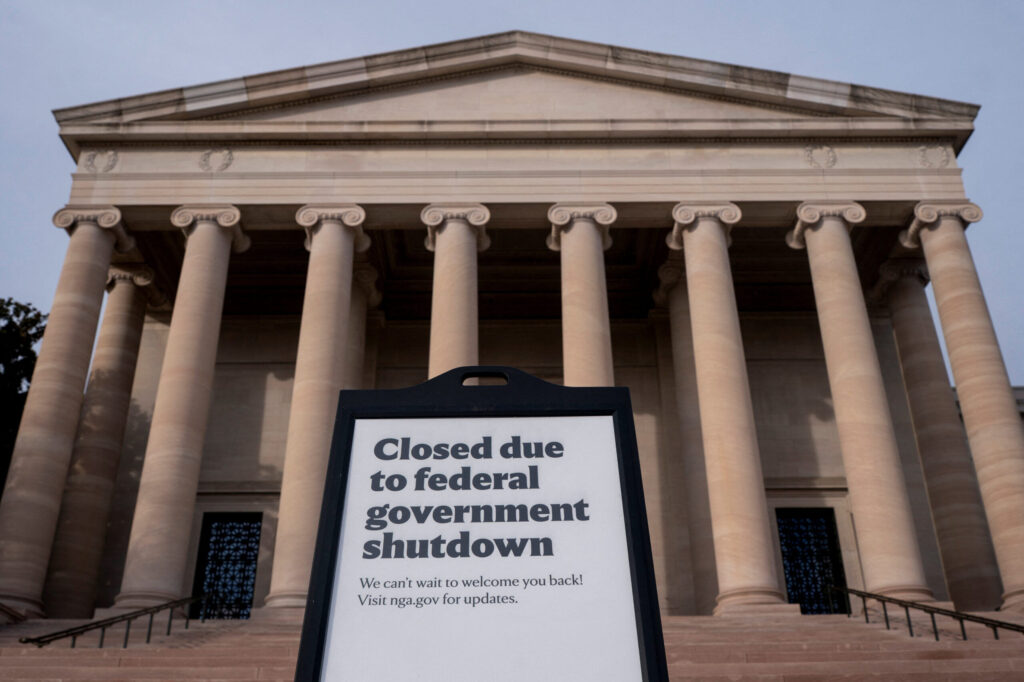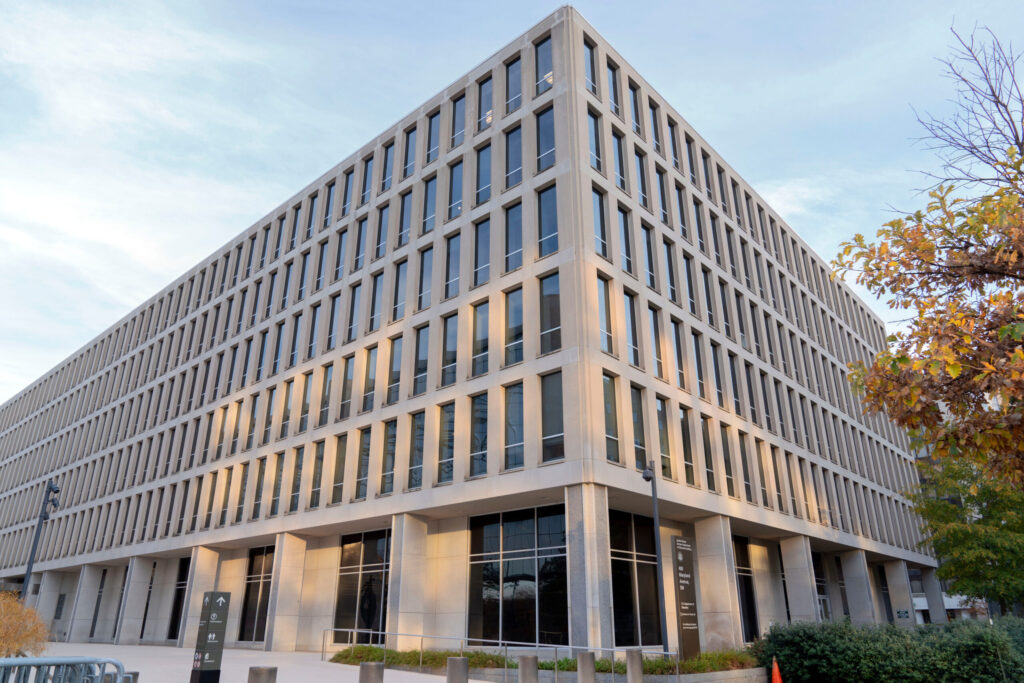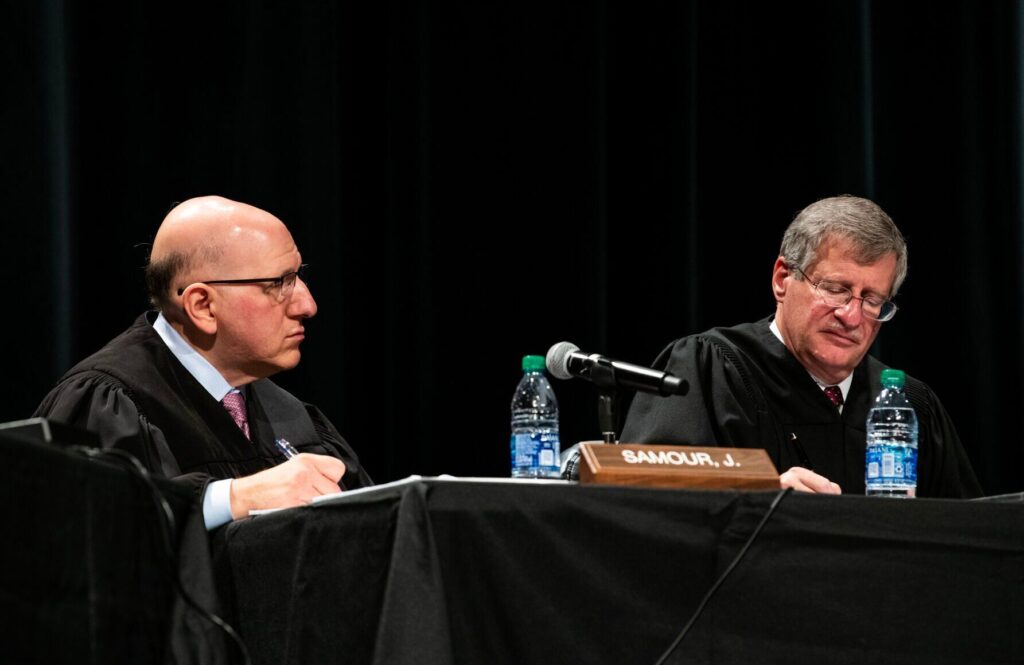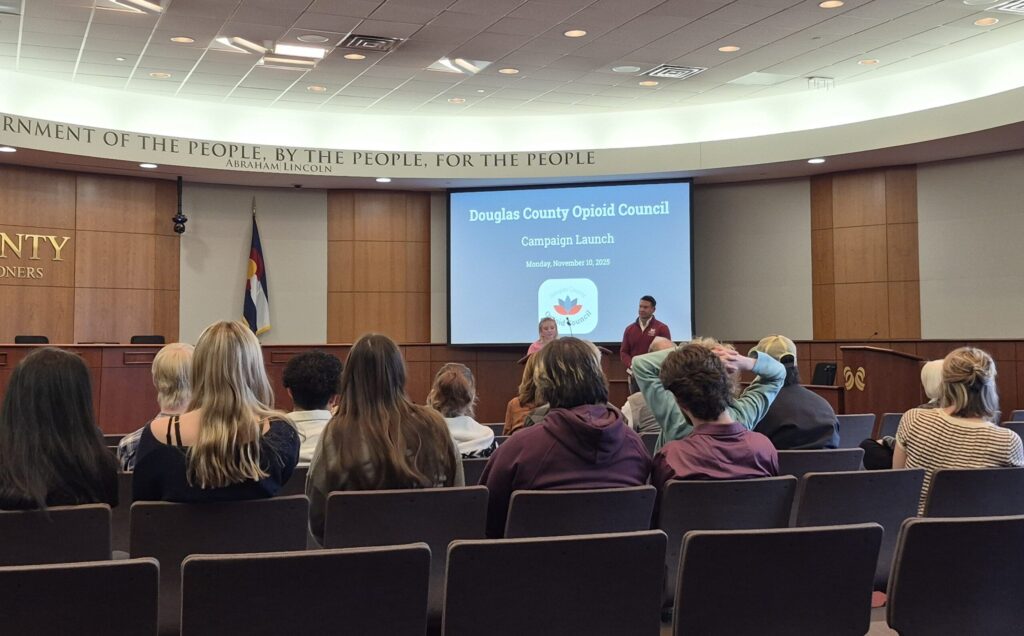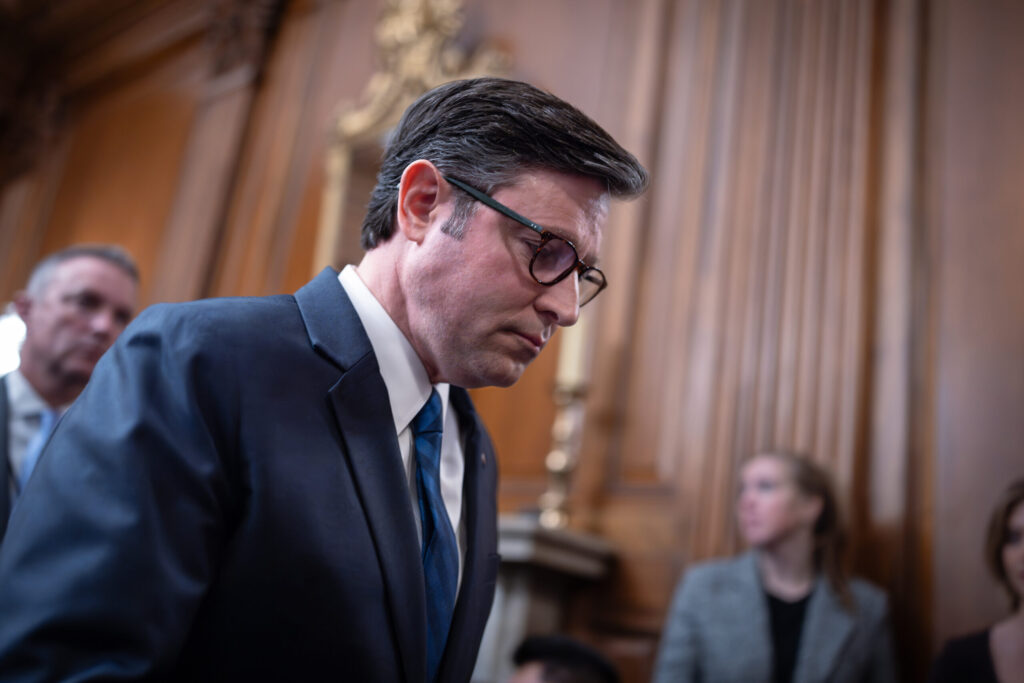Vision emerges for new Colorado Springs open space, Fishers Canyon
A vision is emerging for a new outdoor destination in Colorado Springs.
City parks department officials recently held a public meeting to review two concepts for trails and development at Fishers Canyon Open Space, the 343 acres the city acquired in 2021. On the city’s southwest side, the scenic woods and meadows rise behind the Broadmoor Bluffs neighborhood, bordering Cheyenne Mountain State Park and Pike National Forest.
Both concepts include a new portion of the Chamberlain Trail. Fishers Canyon is seen as a “key gap” to fill that long-envisioned, 26-mile trail touring the city’s backdrop, from Cheyenne Mountain to Blodgett Peak.
In terms of other trail development, the two concepts vary.
Alternative 1, as it was presented, maps between 5-6 miles of trail. That includes a short loop accessible for people with disabilities and a longer loop incorporating Chamberlain Trail on the open space’s lower elevations.
Alternative 2 blueprints closer to 11 miles — more loop options along with the hiking-only Fishers Canyon Trail, stretching to the city parks portfolio’s highest reaches near 9,000 feet (surpassing Mount Muscoco in North Cheyenne Cañon Park).
The long venture would run through Cheyenne Mountain State Park boundaries, and upper parts would be seasonally closed for nesting raptors. Closures would also apply to proposed rock climbing sites.
Longtime local climber Phil Wortmann has encouraged support for Alternative 2. The long hike up would limit visitors, different from roadside climbing destinations. But having scouted the high- elevation rock, he wrote in a post to fellow enthusiasts: “I believe this place holds potential to be the best climbing area in the Springs.”
From the recent meeting’s audience of 60-plus people, most sounded in favor of Alternative 2. That was consistent with previous surveys that showed support for more trails, said David Deitemeyer, overseeing the master planning process for city parks.
“Essentially we’re meeting the demand and the curiosity to explore the open space,” he said, “and option two provides a balance to give you enough access to experience while still preserving large acreage.”
Proponents of Alternative 1 sought more protection — 58% of the acreage undisturbed, compared with 46% under Alternative 2.
“We have concerns about the wildlife,” said one speaking for a small group at the meeting. “There are so many trails in (Alternative 2) that it might impact the wildlife.”
Just as much, some wanted more trails.
Cory Sutela, with mountain biking group Medicine Wheel, said he was “disappointed” by the only single-use trail proposed being the hiking-only Fishers Canyon Trail. He called himself “glad and relieved” by people sounding in favor of Alternative 2 “and in fact would like to see even more trails, including multi-use access to the top,” he said.
From feedback collected since April, Deitemeyer recognized “a tremendous amount of interest for hiking-only and biking-only trails.” The interest has grown around the Front Range, where land managers have found single-use trails to limit conflicts between growing numbers of bikers and hikers.
Colorado Springs officials earlier this year finalized a contentious master plan for an expanded Blodgett Open Space, which included several mountain bike-only trails that lended to criticisms of a “theme park.”
“It’s important to ask the question: Is it appropriate to have hiking-only and biking-only trails on every single property?” Deitemeyer said. “That’s some of the philosophical analysis we need to look at.”
Physical analysis of the property showed other limiting factors, a hired consultant explained while presenting at the recent meeting. The aim is to minimize crossings at a pair of higher drainages, said Amanda Jeter, representing city contractor Studio Campo.
“It’s a very, very steep site, and coupled with the soils up there, that’s a big consideration on the type of use and trails that are possible,” Jeter said.
Single-use trails — steep singletrack for mountain bikes, for example — tend to require more costly construction elements and maintenance, Deitemeyer added. “It’s an increase in resources to allocate.”
But Sutela echoed another trail advocate at the meeting, horseback rider Robert Rickgauer, who spoke on potentially damaging, erosive “social trails” being carved by people over time.
“When you provide more (professionally made) trails, people have a tendency not to do that,” Rickgauer said.
Neighbors have expressed the greatest concern.
The open space’s trailhead is planned to be through a gate at the end of a residential street.
“People bought houses up here for a reason. They want to have peace and quiet,” said Katie Westerfield, one neighbor at the recent meeting. “So people are concerned, but there’s also people that are interested.”
She’s interested in the trail-running potential out her door, while understanding her neighbors worried about traffic, parking on curbs, wildfire risk, emergency evacuation and crowding.
While recognizing an unknown in terms of visitation, Jeter showed the proposed trail designs mostly catering to visits lasting between 30 minutes and two hours. “Important,” Jeter said, “because that helps inform the amount of parking and other operations, maintenance and management.”
Two trailhead parking proposals were presented: Alternative 1 with an initial 33 spots that could be expanded up to 77 spots; and Alternative 2, with an initial 69 spots that could be expanded up to 110.
“We don’t know how many people are going to go to this open space,” said Trails and Open Space Coalition Executive Director Susan Davies, speaking for her small group at the recent meeting. “So perhaps starting smaller, with the opportunity to grow it out.”
A survey is posted at the project webpage, collecting more feedback until Dec. 15: coloradosprings.gov/fisherscanyon
Project leaders plan to present a draft plan at an open house scheduled for 5:30 p.m. Jan. 22 at Cheyenne Mountain Junior High School.
Voting bodies with the city’s parks board and Trails, Open Space and Parks Working Committee could consider a final master plan in the spring.


